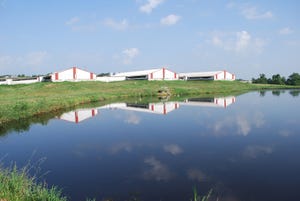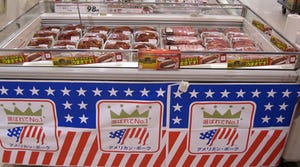Three Tips to Keep Your Hogs Cool This Summer
Even though the majority of pigs today are raised in modern confinement facilities that provide some climate control, producers still face limits in their ability to cool pigs during extreme heat
June 27, 2011

Summer months can trigger heat stress in livestock, especially in pigs, according to Mark Whitney, a swine specialist with the University of Minnesota Extension. Pigs are especially challenged because they lack functional sweat glands to help them efficiently reduce body heat.
Even though the majority of pigs today are raised in modern confinement facilities that provide some climate control, producers still face limits in their ability to cool pigs during extreme heat, he says.
Pigs naturally remove body heat during periods of heat stress through a combination of accelerated respiration, decreased feed intake, increased water consumption and adjustments in physical activity and movement.
Pork producers can minimize heat stress for their pigs by:
Preparing and maintaining cooling systems. Check cooling systems and ensure that thermostats, fans, air inlets, drip coolers, sprinklers, cooling cells and other related equipment are set for summer usage. Use of sprinklers, along with fans, can reduce the temperature in barns provided sprinklers are set correctly. Avoid sprinklers that provide a very fine mist because they will increase humidity levels in the barn. Cooling cells work more effectively to lower humidity levels. Adjust ventilation systems to remove excess moisture from buildings.
Adjusting the feeding program. Since pigs will lower their feed intake during periods of high temperatures, increase the nutritional density of the diet for growing pigs and lactating sows. Adding fat to the diet will also increase the caloric density, but if other nutrient levels are not also increased accordingly, animal performance will still suffer, Whitney says.
Modifying procedures during load-out and transportation of pigs. Transportation is perhaps the most stressful time for pigs during periods of heat. Remove feed from pigs for 12-18 hours before shipment (remove feed but not water). Load fewer pigs in order to allow maximum air movement. Keep vehicles in constant motion and open all vents and slats. Avoid moving pigs during the heat of the day, and allow more time to load pigs. Pigs are apt to become fatigued during hot weather. Additional time and patience are needed to effectively load pigs, while reducing pig and handler stress.
For more educational information, visit www.extension.umn.edu/swine.
You May Also Like



